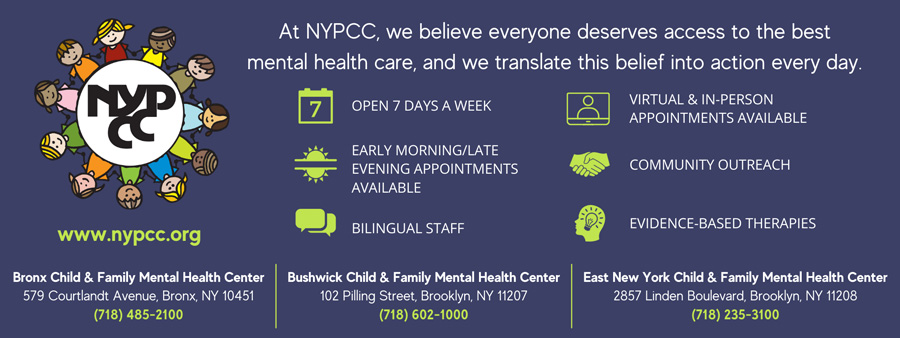As parents, we must balance our feelings of anxiety and uncertainty, on top of our own emotions with those of our children. There are many aspects to the relationship between suicide and families, especially having conversations to find out if children are thinking about suicide. Many parents are ambivalent to finding out if their child is suicidal. As a parent, you may not want to say anything for fear of making the situation worse or because you don’t know what to say if they confirm your concerns. While these conversations can be very difficult and anxiety producing for parents, there is a lot you can do. Talking about suicide with your child provides an opportunity to address the underlying issues, correct misinformation, show that you deeply care, and ultimately get help for your child. There are many reasons why teens lock parents out from their suicidal thought, foremost is a conviction that their parents will “freak out” (Freedenthal, 2022). While parents may have a myriad of reactions from anger or dismissal, impatience to blame – in the end, parents must overcome their own barriers so that their children know that they are safe and encouraged to share their innermost thoughts about this most important topic.

Myths and Facts
It’s natural to find the issue of suicide averting and it can be difficult to start the conversation. You might be concerned that you will make the situation worse or that you will ask about suicide and be mistaken. There are many myths about suicide, the top three being:
Talking about suicide gives someone the idea to take their own life. You don’t give someone suicidal ideas by talking about suicide. Rather, the opposite is true. Talking openly and honestly about suicidal thoughts and feelings can help save your child’s life. By talking openly and directly you are sending the message that you care about them. Having the conversation is often felt by the child as a relief, especially when someone has been alone with these thoughts. If your child is not thinking about suicide, it can still be an opportunity to discuss why you were concerned about them and let them know you’re available if things get challenging.
People who talk about suicide won’t really do it. Almost everyone who attempts suicide has given some clue or warning. Don’t ignore even indirect references to death or suicide. Statements like “You’ll be sorry when I’m gone,” “I can’t see any way out,”—no matter how casually or jokingly said—may indicate serious suicidal feelings.
Anyone who tries to kill themselves must be crazy. Most suicidal people are not psychotic or insane. They are upset, grief-stricken, depressed, or despairing, but extreme distress and emotional pain are not necessarily signs of mental illness.
Observations and Warning Signs
Suicide is often not about wanting to die; it is about wanting to end severe emotional pain. It happens when pain exceeds resources for coping. It’s a complicated problem and lots of distinct conditions can make someone feel suicidal or think about suicide. For most youth, suicide isn’t a socially acceptable way to solve problems or get attention (Freedenthal, 2022). Some youth may “talk” about suicide indirectly, through their writing or artwork. Pay attention to these types of communications from your child and ask about anything that seems out of the ordinary. Not every question will need follow-up, but if you hear an answer that concerns you, keep your eyes open for other signs of suicide risk (see below). Avoid making assumptions about how often or how casually suicide threats are made. Every threat should be taken seriously. Reiterate that you are there to listen, to be present, and not to judge, no matter what he or she has to say.
Possible warning signs for suicidal behavior include:
- Previous suicide attempts
- Talking or writing about suicide or death, even jokingly
- Seeking access to something lethal
- Being moody, withdrawn or sad
- Saying goodbye or giving away possessions. For kids this may be their favorite video games, graphic novels, clothes or other prized possessions that you know would otherwise never leave their hands.
- Losing interest in things they previously enjoyed
- Taking less care of their appearance
- Anxiety or agitation, including difficulty concentrating or sleeping
- Engaging in self-destructive or risky behavior
- Increased use of alcohol or drugs
(New York State Office of Mental Health. Suicide Prevention Center)
Starting the Conversation
Preparation is the best way to manage your anxiety when communicating your concern. Sometimes conversations will be unexpected, and you won’t have time to prepare, but getting prepared can make you feel more comfortable. Usually, it’s better to have the conversation in person, in private, and somewhere you will both feel more at ease and unlikely to be interrupted (avoid public spaces) and allow for plenty of time so you don’t feel rushed. You know your child’s moods and behaviors better than anyone else – be direct. Starters can include: “I have been worried about you lately.” “I’ve noticed some differences in you lately.” “Are you having thoughts about suicide?” or “Are you thinking about killing yourself?” Use open-ended questions so that you get a better understanding of their situation, thoughts and feelings. Avoid phrases like: “You don’t want to kill yourself, do you?” “You’re not thinking of suicide, are you?” As you ease into the conversation, the questions will come more naturally, but make sure you ask without judgment and in a way that allows them to be open and honest.
With younger children, one of the best ways to address suicide in conversation comes from Dr. Pamela Morris (P. Morris, personal communication, February 22, 2022). Think about how you would talk to your child about other health conditions (e.g., headache or a fall): How much does it hurt? How long have you felt this way? What happened right before you felt this way? What happened right after you felt this way? This allows for you to get a full picture of your child’s current emotional makeup.
Listen Without Judgment
It is a natural response to want to talk your child out of suicide, to react with fear and anguish, to do anything to keep your child safe. What youth need to know is that they are safe, even welcome, to share their innermost thoughts about this emotionally charged topic. You want to support your child’s feelings without interruption, with nonjudgmental listening and exploration of their pain (Freedenthal, 2022). Children need an opportunity to talk about how they are feeling and may be relieved to be able to do so. You want to make statements that express empathy for their distress: “It sounds like that was really difficult.” “I know how painful that can be.” “I know what that’s like. I’ve felt that way.” Telling them not to feel that way, to pull it together, isn’t as helpful as letting them know what it is that you’re concerned about, and how you can help (Kaslow, 2022).
Risk Factors
If your child confirms they are thinking about suicide, it is important to try and find out if they are in immediate danger. People are usually at higher risk of suicide when they have a specific way in mind and the ability to carry it out. The more detailed the plan is, generally the higher the risk will be. Other factors (Suicide Prevention Center, 2022) include a family history of suicide, being diagnosed with some type of mental illness, having made a previous attempt, and, being exposed to the death of a peer who dies under any circumstance not just suicide. For teens and young adults who are struggling to find their own identities and place in life, being confronted with mortality can be very unsettling emotionally and some teens who are already emotionally vulnerable may think about dying themselves (NYSOMH, 2022).
In Summary:
- Pick a good time and ask your kids what they think/feel about suicide
- Be conversational, honest and direct
- LISTEN to the answer
- Don’t disagree with them or minimize what they tell you
- If you hear anything that concerns you, simply say: TELL ME MORE
- Be prepared to take action
- Be kind to yourself. It can be draining talking to someone about suicide and supporting them.
Immediate Resources and Supports:
- 988 – National Suicide and Crisis Hotline
- Trevor Project – LGBTQ Crisis Hotline 1-866-488-7386
- 1-888-NYCWELL or text “WELL” to 65173*
- Suicide Safe App by SAMHSA
- Suicide Safety Plan App for Android or Apple
Scott Bloom, LCSW, is Director of Special Projects and Initiatives at the New York Psychotherapy and Counseling Center. To contact Scott, email SBloom@nypcc.org, call (347) 352-1518, and visit the New York Psychotherapy and Counseling Center at www.nypcc.org,
Citations and Resources:
The author wishes to acknowledge Dr. Pamela Morris at NYU Steinhardt Suicide Prevention Center and Dr. Regina Miranda from Hunter College at the Laboratory for the Study of Youth Cognition for their knowledge and personal conversations on suicide prevention.
American Foundation of Suicide Prevention. https//Afsp.org/statistics. December 2022
Centers for Disease Control (CDC), National Center for Injury Prevention and Control. Web-based Injury Statistics Query and Reporting System (WISQARS). Available: www.cdc.gov/injury/wisqars.
Freedenthal, Stacey. 10 Things PhD, LCSW, 10 Reasons Teens Avoid Telling Parents about Suicidal Thoughts. Speaking of Suicide, 2022. https://www.speakingofsuicide.com/2013/05/29/parents-and-teens/
Kaslow, Nadine, PhD. What to do if You’re Worried About Suicide. Child Mind Institute. September 8, 2022.
Kramer, Abigail. Kids Mental Health, by the Numbers. The Center for New York City Affairs. October 2021.
Mental Health America. Mental Health Glossary. https://mhanational.org/terms-know-mental-health-glossary. May 2022.
Mental Health America. Youth in Crisis. https://mhanational.org/YouthinCrisis. May 2022.
Mental Health Commission of New South Wales. https://conversationsmatter.org.au. December 2022.
New York State Office of Mental Health. New York State Health Connector, Department of Health. Suicide and Self-Harm Dashboard, 2022. https://nyshc.health.ny.gov/web/nyapd/suicides-in-new-york
New York State Office of Mental Health. Suicide Prevention Center. 2022. https://www.preventsuicideny.org/
Suicide Prevention Resource Center, 2022. https://sprc.org/about-suicide





